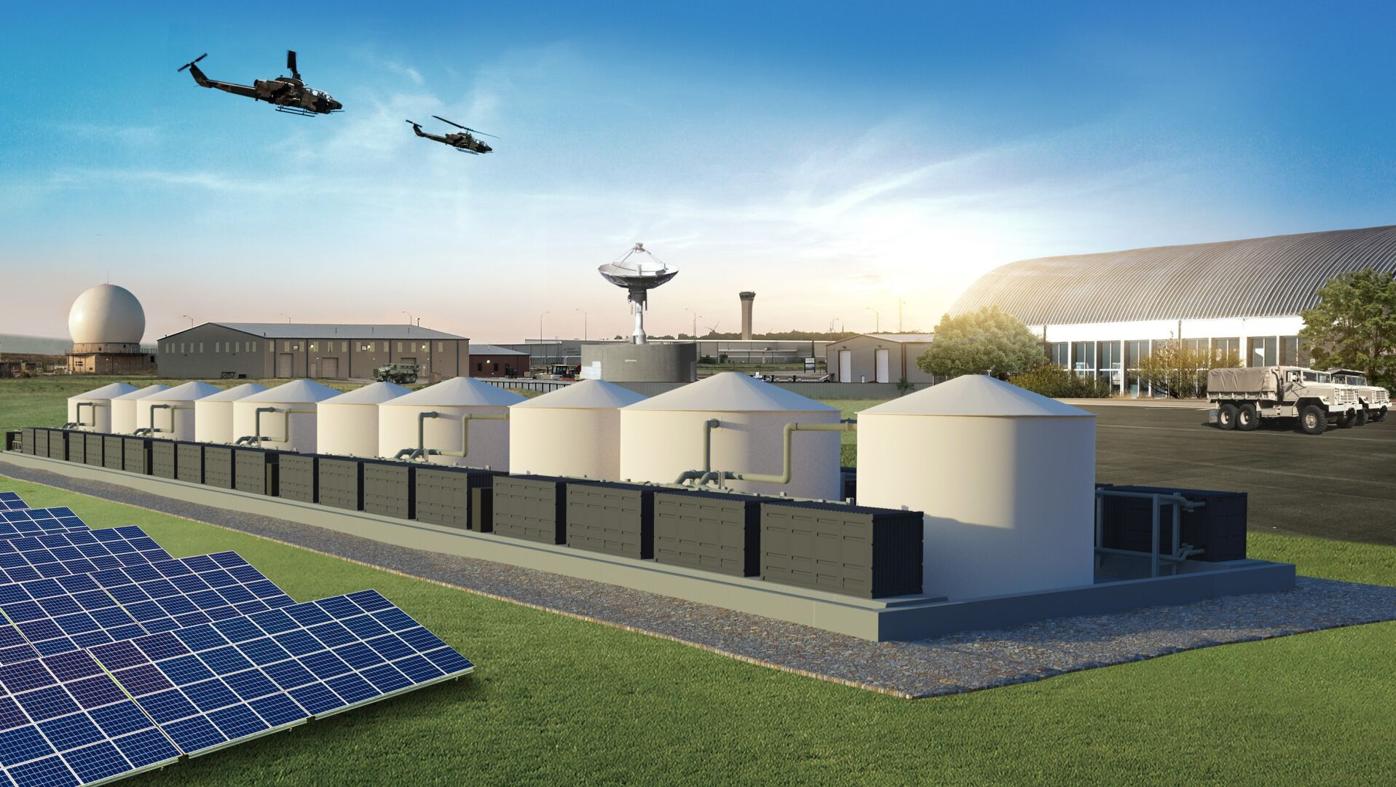Lockheed Martin gets contract to build long-lasting battery storage system at Fort Carson
The U.S. Department of Defense awarded Lockheed Martin a contract to build a long-duration battery power storage system at Fort Carson near Colorado Springs to increase the amount of time the base can operate during a power failure and improve the base’s resiliency and independence from the commercial grid.
The new battery system — a Coordination Chemistry Flow Battery, also called a redox flow battery — is expected to improve the base’s ability to sustain critical missions, minimizing the need for expensive diesel generators.
The Department of Defense has a plan to make military bases self-sufficient for at least 14 days without outside power, water or other utilities dependent on commercial power sources that might be unavailable during emergencies.
“We are committed to supporting the U.S. Army’s climate strategy to foster modernization and readiness across the force, while seeking out solutions that offer a more secure, sustainable and cleaner future,” said Tom Jarvi, Lockheed Martin GridStar Flow program director. “GridStar Flow is designed to meet emerging, long-duration energy storage needs and bolster the necessary grid resilience to combat 21st century security challenges.”
Most grid-scale lithium batteries only provide electricity for about four hours and can fail after repeated charge and discharge cycles. The new battery storage system is expected to last 10 hours and can tolerate 100% discharge cycles without damage.
The redox flow battery was developed by NASA in 1973.
Creating a microgrid for a single military base and powering it with on-site sources is a priority for the Defense Department. Options under consideration include both battery storage for renewable power and small modular nuclear reactors.
Lockheed Martin says the system is intended as a demonstration unit for the Army. It will be tested against protocols that simulate microgrid and renewable integration to ensure critical missions can continue in the event of a long-term power outage.
Lockheed Martin says insights gained from this pilot project could support the deployment of future long-duration storage across all Defense Department services and installations.
The project is expected to break ground in the fall.
Lockheed Martin previously installed a 4.25 MW/8.5 MWh battery storage system at Fort Carson in 2018 as part of an energy savings performance contract to reduce energy costs and improve energy resilience. It works to reduce peak electrical demand, which increases power grid resilience and lowers the base’s electrical bills by providing on-base peak shaving power during periods of high-tiered pricing tariffs by utilities. It was installed at no cost to the military.
The operating theory of a CCFB is to separate the battery positive and negative electrodes from the electrolyte and use tanks to store large quantities of electrolyte that can be pumped through the electrodes, either to produce output power from charged electrolyte or recharge depleted electrolyte by inputting electricity from the grid.
To simplify the theory, think of an ordinary automotive lead-acid battery that contains acid. When the battery is charged, the charge is contained in the acid, which then reacts with the internal plates to generate electricity. Once discharged, energy must be put back into the acid by the car’s alternator. One way to instantly recharge a lead-acid battery is to replace depleted acid with fresh acid.
Lockheed’s system continuously pumps a proprietary nonflammable, noncorrosive aqueous electrolyte through the plates. As it is depleted, the system routes the liquid to a different storage tank, where it is circulated through another set of plates that take energy from the power grid — or directly from renewable sources like solar and wind — to recharge the electrolyte.
Creating an active circulating system allows duration of the output energy to be vastly extended simply by increasing the amount of charged electrolyte in storage.
The number of generating modules and the size of the electrolyte storage tanks determine the amount of electricity that is available, and storage can be increased independent of the number of generating cells.





